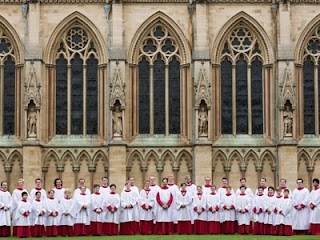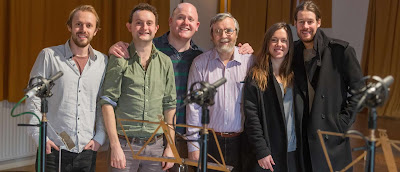 |
Yevgeniya Zbrueva as Lel in
Rimsky Korsakov's The Snow Maiden
at the Bolshoy Theatre, 1894 |
In advance of Opera North's staging of Rimsky Korsakov's The Snow Maiden next year (directed by John Fulljames), I thought it would be interesting to look at the background to the opera, particularly its links to the work Alexander Ostrovsky.
The 19th century Russian playwright Alexander Ostrovsky is little known today in Western Europe, yet his 47 plays are a staple of the Russian stage even today. Though Ostrovsky's name is not as well known as that of his contemporaries, Tolstoy, Dostoyevsky and Turgenev, his works are known to operatic audiences through adaptation. Janacek's opera Katya Kabanova is based on Ostrovsky's play The Storm, whilst Rimsky Korsakov's The Snow Maiden is based on Ostrovsky's play of the same name.
Ostrovsky specialised in social realism, being praised for his insight into the psychology of the Russian people, so it is no surprise that an opera like
Katya Kabanova be based on one of his plays. But
The Snow Maiden is something else again, and Ostrovsky's original play caused something of a stir. Written in 1873, it was inspired by tales told him by his nanny and has a direct link to the Russian folk fairytale which Ostrovsky read in the Vol. 2 of Alexander Afanasyev's book
The Slavs' Views Upon Nature (1867). The play was produced in 1873 at the Bolshoy Theatre, with incidental music by Tchaikovsky.
As a fairy tale, at its first performance it caused something of a stir coming from a writer known for his satirical realism and social commentary, but Ostrovsky's comment was that even Shakespeare had fairytales (such as
A Midsummer Night's Dream) alongside his more serious plays.
Rimsky Korsakov's wrote his own libretto to the opera, which he composed in 1880-81, and he revised it in 1898. The work was performed in London in 2001 by the Guildhall Schooll (see the review in
the Guardian) and in 2014 by University College Opera (see the review in
BachTrack), but Opera North's staging of the work next year will be its first professional staging in the UK for 60 years.
It remained the composer's favourite amongst his works, and in his autobiography he says that '
The Snow Maiden is not only my best opera, but perhaps the best contemporary opera in general', however the critics did not agree casting Rimsky Korsakov as a talented symphonist rather than an operatic composer.
The plot concerns the interaction between mythological characters, real people and those in between. Compared to the play, Rimsky Korsakov increased the pantheistic nature of the opera, strengthening the roles mythological characters. The work weaves in a lot of folk tunes, the composer was concerned to characterise the different groups, and the real people, the villagers, get folk tunes, in fact Rimsky Korsakov uses an almost Wagnerian system of leitmotifs despite having not heard much Wagner. And the mythological characters have their own whole-tone harmony, which emphasises the way the real people are unable to make emotional contact with the mythological.
The Snow Maiden's journey through the opera, finding love and eventually expiring because of it, has a Freudian coming of age feel to it, but the Snow Maiden's death brings an end to perpetual Winter, which takes us into
Rite of Spring territory, It will be interesting to see what direction Opera North's new production goes.
The original work was a very long piece, and Rimsky Korsakov's 1898 version is essential the original one with cuts, plus recommendations for further cuts. Perhaps it is this prolixity which puts people off, the revised version can last three and a half hours. And the story is not exactly dramatic, though it is touching and Rimsky Korsakov's ear for orchestral colours really comes to the fore.
The folk tale is still current in Russia, and Snegurochka (the Snow Maiden) is a popular seasonal figure in Russian culture, along with her grandfather Ded Moroz (Old Man Frost) the Russian Father Christmas.



































%20in%20The%20Merry%20Widow.%20Credit%20Mihaela%20Bodlovic.%20(2).jpg)

%20in%20Trial%20by%20Jury.%20Credit%20Mihaela%20Bodlovic..jpg)


%20Britten%20Pears%20Arts%20(1).jpg)

.jpg)
